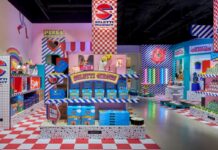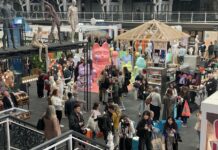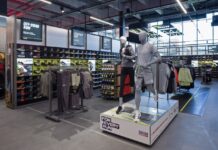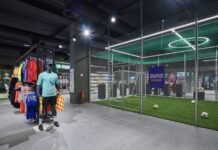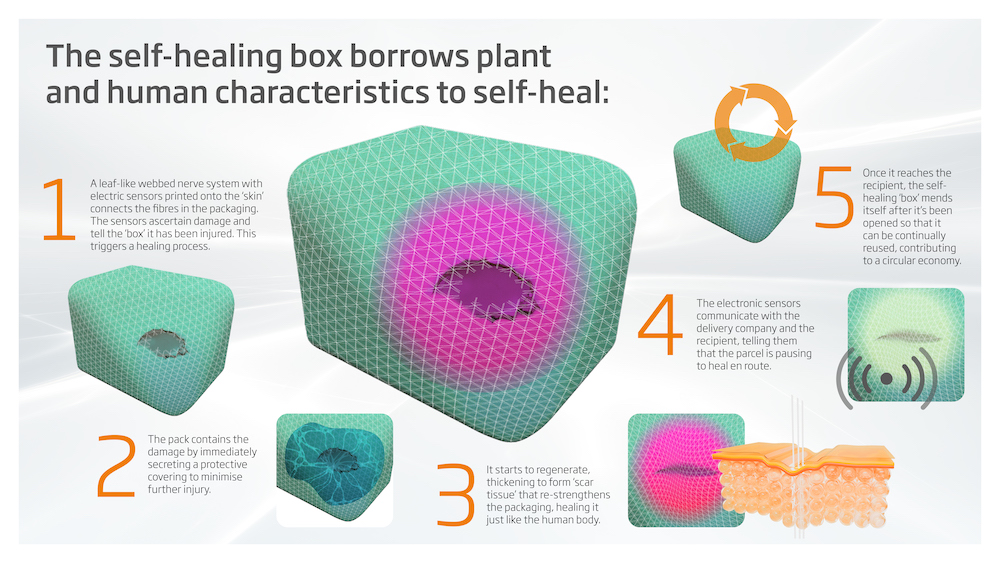In the 150th year of the cardboard box, DS Smith’s innovation experts today reveal a futuristic blueprint for how the box might evolve in the next 50 years.
The blueprint shows how packaging could be made from organic, programmable fibres with the ability to self-heal – like our skin – when damaged.
The characteristics of the self-healing box include:
- A webbed nerve system that borrows from the composition of leaves: sensors are printed onto the ‘skin’ of the box and connect all fibres in the packaging, so that it can ascertain damage, and communicate externally.
- Regenerative ‘scar tissue’: healing itself just like the human body, the surface stretches and thickens to cover the injury, and transmits data to the delivery company and the recipient to tell them it is pausing to heal itself en route.
- Reuse capability: after it has been opened, the packaging heals the opening of the pack, so that it can be continually reused, extending its life.
Wim Wouters, Innovation Director, DS Smith, comments: “There is already a trend for the technologies we use every day to look after themselves – self-driving cars are the obvious example. Packaging that heals itself so it can be perpetually reused is of course a futuristic concept, but today we’re already using circular principles to design out waste and recycling the fibres we use by up to 25 times, so a circular economy where materials stay in use for much longer, might be closer than we think.”
Looking back into its storied past as well as into its evolutionary future, to mark the 150th year of the cardboard box DS Smith has created a retrospective of corrugated cardboard, charting its journey over time and how it has woven its way through society for hundreds of years. The new digital archive celebrates past and present achievements in the race for innovative ideas, such as plastic replacement designs like Eco Carrier, and parcels that can withstand cold and wet conditions, such as Greencoat.
Highlights from the cardboard box’s past and present:
- 1600s: The cardboard box is born, but not as we know it. Taking its roots from 16th century fashion, the construction of ruffled lace collars is to inspire the corrugating of paper for cardboard centuries later.
- 1871: American Albert L. Jones patents machinery to produce corrugated board in 1871 to wrap glass bottles and becomes the grandfather of the modern corrugated industry. Ultimately, he begins the cardboard revolution that will lead to the birth of the box.
- 1886: The jeweller Tiffany® introduces its eponymous ring setting and creates the original patented blue ring box. The box is synonymous with the brand, and becomes one of the most recognisable in history. Admirers visit the store in New York requesting to buy the boxes. They are refused unless they buy a ring to go with it.
- 1939: The Second World War begins, and gas masks are issued across Britain in cardboard boxes. It is a legal requirement to carry them at all times. The boxes foster rivalry among school children, and kids make their own modifications to personalise their gas mask box.
- 2020: The UK is the first country to begin a vaccine rollout and the project is the largest national immunisation program in history. As key workers and following months of lockdown, the DS Smith team helps transport the first vaccines in the UK and then worldwide to hospitals and clinics in cardboard boxes.
What’s next for the cardboard box?
In addition to the self-healing box blueprint, innovators at DS Smith also expect to see developments in the fields of self-adjusting parcels, and spray-on packaging.
Wim Wouters, Innovation Director, DS Smith, continued: “I think we will eventually see intelligent packaging that actually self-adjusts its size to fit its contents, making the absolute most of materials and space. And, taking inspiration from the unique dress that captured the world’s attention during Paris Fashion Week, we will surely see a time when spray-on packaging becomes real.
“Right now, the reality is that boxes can already be high performance kit. It’s possible to make them water and humidity proof, anti-microbial, and to track them throughout their journey with printable nano technology. Self-healing boxes are not here yet, but we have to look into the future for the next set of innovations that will help us use materials as sustainably as possible. We will only achieve this with fresh thinking and new ideas. We’re already looking at partnerships to accelerate the journey to a circular economy so would love to hear from experts who can come with us.”




